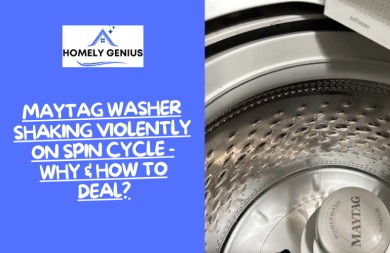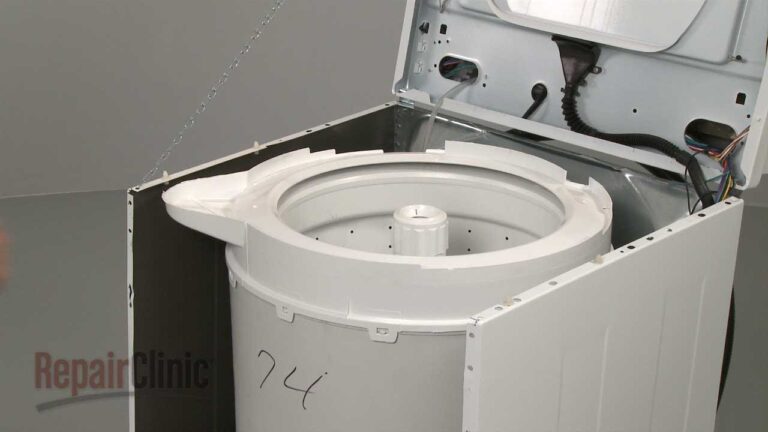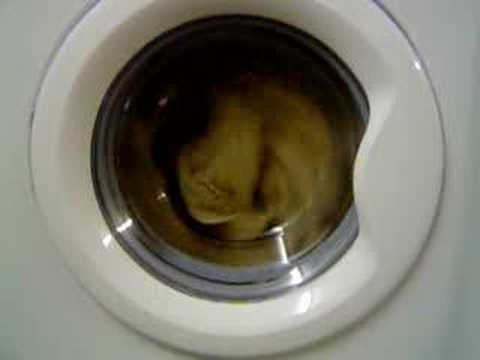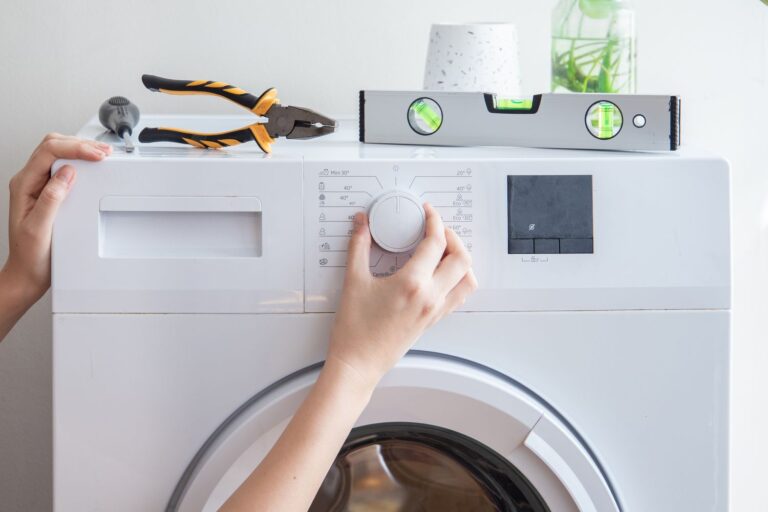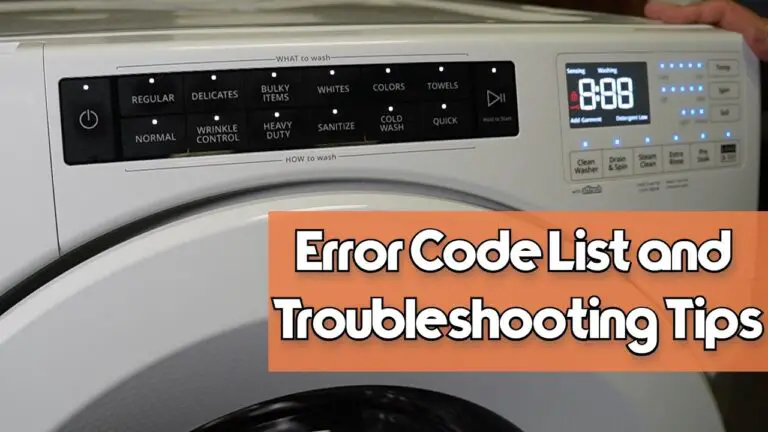Washing Machine DIY Repair: Ultimate Guide to Fixing Issues

To repair a washing machine, identify the problem and follow a step-by-step guide. Common issues include leaks and drainage problems.
Washing machines can sometimes break down, causing inconvenience. Fixing them yourself can save money and time. Basic tools like a screwdriver, pliers, and a multimeter are often needed. Common issues include leaks, drainage problems, and spin cycle malfunctions. Identifying the problem is the first step.
Check the hoses, filter, and drum for visible damage or blockages. If the machine won’t start, inspect the power supply and door lock. Follow a detailed repair guide for specific issues. DIY repair can extend the life of your washing machine and improve its performance. Always ensure safety by unplugging the machine before repairs.
Common Washing Machine Problems
Washing machines are essential in our daily lives. Yet, they can face issues that disrupt their function. Understanding these common problems helps in timely fixing them. Here, we discuss frequent washing machine problems and how to address them.
No Power
If your washing machine has no power, check the power outlet. Ensure the cord is plugged in securely. Look at the circuit breaker to see if it has tripped. If the machine still has no power, inspect the power cord for damage. Replace it if necessary.
Water Leaks
Water leaks can create a mess and damage your floor. First, check the hoses for any cracks or loose connections. Tighten or replace hoses as needed. Inspect the door seal for any wear and tear. Replace the seal if it is damaged.
Unusual Noises
Unusual noises during a wash cycle can be alarming. They may indicate a problem with the drum or motor. Check for any foreign objects in the drum. Remove any items that do not belong. If the noise persists, inspect the motor for any signs of wear. You may need to replace the motor or call a professional.
Essential Tools For Diy Repairs
Fixing your washing machine at home can save money. But, you need the right tools for the job. Here is a list of essential tools for DIY repairs.
Basic Hand Tools
Basic hand tools are very important for washing machine repairs. Here are some must-have items:
- Screwdrivers: Phillips and flathead types are needed.
- Adjustable Wrench: Useful for loosening and tightening nuts and bolts.
- Pliers: Great for gripping and pulling.
- Nut Drivers: Helps in removing and installing nuts.
- Flashlight: A flashlight helps you see in dark spaces.
Specialized Equipment
Some repairs require special tools. These tools are designed for specific tasks:
- Multimeter: Checks electrical connections and voltages.
- Socket Set: Different sizes of sockets for various bolts.
- Torx Screwdrivers: Used for special screws in washing machines.
- Putty Knife: Helps in opening the washing machine lid.
- Drain Pump Filter Tool: Helps in cleaning the drain pump filter.
Having these tools ready makes the repair process smoother. Each tool serves a unique purpose. They help you fix issues efficiently.
Safety Precautions
Before diving into any DIY washing machine repair, prioritize safety. Proper precautions can prevent accidents and further damage to your appliance. Below, we cover essential safety guidelines focusing on power safety and water safety.
Power Safety
Always start by unplugging the washing machine. This step is crucial to avoid electric shocks.
- Wear rubber gloves to reduce risk of electric shock.
- Inspect the power cord for any visible damage. Replace it if needed.
- Use a voltage tester to ensure the machine is not live.
Never work on your washing machine if you feel unsure. Consult a professional instead.
Water Safety
Water and electricity are a dangerous combination. Follow these steps to manage water safely.
- Turn off the water supply to the machine.
- Drain any remaining water from the machine using a bucket.
- Place towels around the machine to absorb any spills.
Check all hoses for leaks or damage. Replace them if they are worn out.
These basic safety precautions will help ensure a safe DIY repair process. Always take your time and never rush through these steps.
Diagnosing The Issue
Washing machine issues can be frustrating. Diagnosing the problem is the first step. This section will guide you through simple steps to identify the issue.
Visual Inspection
First, perform a visual inspection. Look for obvious issues.
- Check for loose or broken parts.
- Inspect the hoses for leaks or cracks.
- Ensure the power cord is plugged in securely.
- Look for any visible damage on the machine body.
If you see something unusual, note it down. This can help in further troubleshooting.
Error Codes
Modern washing machines often display error codes. These codes help identify the problem. Refer to your washing machine manual for the meanings.
| Error Code | Possible Issue |
|---|---|
| E01 | Door not closed properly. |
| E02 | Water not filling. |
| E03 | Draining issue. |
| E04 | Motor problem. |
Write down the error code. This helps in understanding the next steps to take.
If no error code appears, you may need to troubleshoot manually. Check the manual for other symptoms.
Fixing Electrical Problems
Fixing electrical problems in a washing machine can seem daunting. But with the right guidance, it’s manageable. This guide will help you with two common issues: replacing fuses and repairing wiring.
Replacing Fuses
A blown fuse can stop your washing machine from working. First, unplug the machine. This ensures safety. Next, locate the fuse box. It is usually at the back. Open the box and find the blown fuse.
You can identify a blown fuse easily. It will have a broken wire inside. Replace it with a fuse of the same rating. You can find the rating on the fuse itself. Close the fuse box and plug the machine back in. Test it to see if it works.
Repairing Wiring
Damaged wiring can also cause problems. Start by unplugging the machine for safety. Inspect the wiring for any visible damage. Look for frayed wires or burnt marks.
If you find damaged wires, you will need a wire stripper and electrical tape. Use the wire stripper to remove the damaged part. Then, twist the ends of the wire together. Cover the joint with electrical tape. This will protect it from further damage.
Sometimes, wires may need replacing. Use wires of the same gauge. This ensures proper functionality. Secure the new wiring properly. Plug in the machine and test it.

Credit: www.familyhandyman.com
Addressing Water-related Issues
Water-related issues are common in washing machines. These problems can disrupt your laundry routine. Let’s explore some solutions to these issues.
Fixing Leaks
Leaks can cause water damage. Check the hoses first. Ensure they are not cracked or loose. Tighten the connections if needed. If the hose is damaged, replace it.
Inspect the door seal. Dirt or wear can cause leaks. Clean the seal with a cloth. Replace it if it’s worn out. A damaged seal needs immediate attention.
Examine the water inlet valve. It controls water flow into the machine. If the valve is faulty, replace it. This will stop leaks effectively.
Unclogging Drains
A clogged drain can flood your laundry room. First, check the drain hose. Remove any obstructions you find. A straightened hanger can help.
Next, inspect the pump filter. It’s located at the bottom front of the machine. Unscrew the filter and clean it. Remove any debris you see.
If the problem persists, the drain pump might be faulty. You can test it with a multimeter. If it’s not working, replace the pump. This ensures smooth water flow.
| Issue | Possible Solution |
|---|---|
| Leaking hoses | Tighten or replace hoses |
| Damaged door seal | Clean or replace seal |
| Faulty water inlet valve | Replace valve |
| Clogged drain hose | Remove obstructions |
| Dirty pump filter | Clean filter |
| Faulty drain pump | Replace pump |
Dealing With Mechanical Failures
Mechanical failures in washing machines can be frustrating. Fixing these issues at home can save time and money. This guide will help you address common mechanical problems.
Repairing Drum
A broken drum can cause loud noises and improper washing. To fix the drum, follow these steps:
- Unplug the washing machine for safety.
- Remove the back panel using a screwdriver.
- Inspect the drum for any visible damage.
- Tighten or replace any loose bolts around the drum.
- Rotate the drum manually to ensure it moves smoothly.
If the drum is damaged, you may need to replace it. This process can be complex. Consider consulting a professional if needed.
Replacing Belts
Worn-out belts can prevent the drum from spinning. Replacing the belts is a straightforward task:
- Unplug the washing machine for safety.
- Remove the back panel using a screwdriver.
- Locate the belt connected to the drum and motor.
- Slide the old belt off the pulleys.
- Place the new belt over the pulleys, ensuring it is tight.
Use the correct belt size for your washing machine model. Check the user manual for this information.
Regular maintenance can prevent mechanical failures. Inspect and replace parts as needed to ensure smooth operation.

Credit: www.youtube.com
Maintenance Tips
Keeping your washing machine in good shape can save you money. Follow these maintenance tips to ensure your machine runs smoothly. Regular cleaning and inspections are key to its longevity.
Regular Cleaning
Regular cleaning helps your machine last longer. Clean the drum and detergent drawer monthly. Use a damp cloth to wipe the drum. Remove and rinse the detergent drawer under warm water. Use a toothbrush for stubborn residue.
Run an empty hot wash cycle with vinegar. This removes any mold and soap buildup. Do this once a month for best results.
| Part | Cleaning Frequency |
|---|---|
| Drum | Monthly |
| Detergent Drawer | Monthly |
| Filter | Every 3 Months |
Routine Inspections
Inspect your machine regularly for wear and tear. Check the hoses for leaks or cracks. Replace them every five years for safety.
Listen for unusual noises during the wash cycle. These can indicate a problem. Tighten any loose screws or bolts. Look at the machine’s feet to ensure it is level. An unbalanced machine can cause damage.
- Check hoses for leaks
- Replace hoses every five years
- Listen for unusual noises
- Tighten loose screws
- Ensure the machine is level
By following these simple maintenance tips, you can avoid costly repairs. Keep your washing machine in top shape with regular cleaning and inspections.
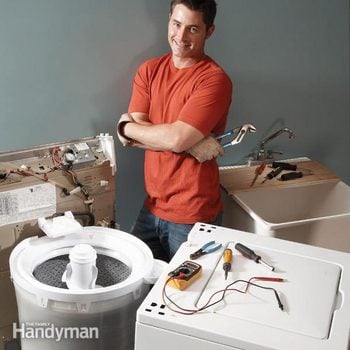
Credit: www.familyhandyman.com
Frequently Asked Questions
Can You Repair A Washing Machine Yourself?
Yes, you can repair a washing machine yourself. Use online guides and tutorials for common issues. Always unplug the machine first.
What Is The Most Common Washing Machine Failure?
The most common washing machine failure is a faulty or broken drive belt. This issue prevents the drum from spinning.
Is It Worth Repairing A Washing Machine?
Yes, repairing a washing machine is often worth it. Consider repair costs versus replacement costs and machine age.
How To Fix A Washing Machine That Won’t Spin?
Check the lid switch, drive belt, and motor coupling. Ensure the load is balanced. Inspect and clean the drain pump.
How To Fix A Leaking Washing Machine?
Check hoses and seals for damage. Replace faulty parts to stop the leak.
Why Won’t My Washing Machine Start?
Ensure the power supply is working. Check the door latch and control panel for faults.
How To Clean A Washing Machine Filter?
Locate the filter, usually at the front bottom. Remove and clean it under running water.
Why Does My Washing Machine Smell Bad?
Clean the drum and gasket. Run a hot water cycle with vinegar or a washing machine cleaner.
Conclusion
Mastering DIY washing machine repairs can save time and money. By following these steps, you can fix common issues yourself. Always prioritize safety and consult the manual. With practice, you’ll gain confidence in handling repairs. Keep learning and maintain your washing machine well to ensure its longevity and optimal performance.

